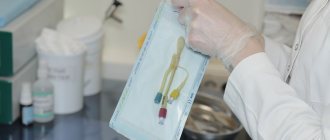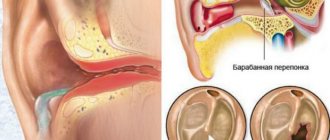Features of sinusitis in pregnant women
All representatives of the fair sex who are pregnant have a greatly reduced immune system. This is a necessary protection for the gestating fetus, since it is considered a half-foreign agent for the mother’s body (the presence of some part of the father’s gene foreign to the woman’s body), and can be subjected to destruction by a strong immune system. Against such an unfavorable, defenseless background, expectant mothers very often develop infectious diseases.
Sinusitis, inflammation of the paranasal sinuses, occurs in pregnant women mainly due to the “game” of female hormones and introduces quite serious problems into the functioning of their body. They are associated with a decrease in the ability to provide the fetus with the oxygen it needs, since a constantly stuffy nose prevents it from entering in sufficient quantities.
Sinusitis in pregnant women
Swollen nasal passages inhibit the process of normal air circulation in any of the 4 nasal sinuses, causing stagnation in it, which contributes to the development of the corresponding type of sinusitis:
- Sinusitis is characterized by the development of an inflammatory process in the maxillary sinus and is accompanied by pain in the teeth, cheeks and forehead.
- Sphenoiditis is a pathological condition of the sinus of the sphenoid bone, occurring with acute pain syndrome localized in the back of the head.
- Ethmoiditis is associated with inflammation of the ethmoid bone structure and is accompanied by pain in the bridge of the nose.
- Frontitis is an inflammatory process that occurs directly in the frontal sinus, occurring with pronounced pain in the eye and forehead area.
The most characteristic feature of the pathology is a significant increase in pain and the appearance of a feeling of heaviness in the affected sinus with any movement of the head. What is noteworthy for this disease if it occurs during pregnancy is that swelling of the mucous membranes of the sinuses can occur in the absence of a provoking factor such as an allergic or cold.
Important! Most often, the formation of swelling occurs in the third trimester. Experts associate this factor with the structural features of the vascular walls and the appearance of disturbances in the process of fluid exchange due to the almost completely closed sinus cavities. The pathological process poses a direct threat to the health of a pregnant woman, since pathogenic microorganisms begin to actively multiply in the excessively swollen mucous membrane covering the nasal cavity and throat.
Causes of sinusitis in pregnant women
Most often, the development of rhinosinusitis during pregnancy is associated with a significant weakening of the immune system due to hormonal changes.
Various infections can easily enter the body, causing inflammatory processes. Bacteria, chlamydia, fungi, and viruses are common causes of sinusitis. The disease can be a consequence of a poorly treated cold or rhinitis, as well as a complication of upper respiratory tract diseases. A factor contributing to the development of infection in the maxillary sinuses may be a deviated nasal septum due to injury or congenital anomalies.
The characteristic first signs of the disease are:
- constant nasal congestion;
- pain in the frontal and nasal sinuses;
- yellow-green discharge from the nasal cavity;
- headache.
In the acute form of sinusitis, pregnant women may experience an increase in body temperature. A typical symptom for chronic sinusitis is a suffocating cough at night, which does not go away after traditional treatment. Patients may experience signs of conjunctivitis.
It is difficult to detect sinusitis at an early stage, since its symptoms are very similar to a common runny nose. To diagnose the disease, radiography and computed tomography are used. But these diagnostic methods are contraindicated for pregnant women (especially in the 1st trimester) due to the harmful effects of radiation.
The diagnosis of sinusitis during pregnancy can be determined based on the following studies:
- diaphanoscopy (examination of the sinuses);
- Ultrasound;
- puncture (puncture of the maxillary sinuses).
If sinusitis during pregnancy is not treated in time, it can lead to serious consequences for both the woman and the child. From a lack of oxygen due to nasal congestion, hypoxic disorders develop, the renal pelvis is affected, myocarditis, meningitis, and brain abscess develop.
Therapy for rhinosinusitis includes a set of measures that suppress the source of infection and restore the drainage function of the nose. How to treat sinusitis during pregnancy?
Treatment consists of three approaches:
- nasal rinsing;
- taking medications;
- puncture.
A set of therapeutic measures is selected by the doctor individually, depending on the characteristics of the pregnant woman’s condition and the type of sinusitis.
The main way to protect yourself from sinusitis is to promptly treat colds and runny nose.
Preventive measures to prevent illness:
- Avoid hypothermia.
- In winter, go outside in a hat.
- Do breathing exercises to stimulate air exchange in the sinuses. Close one nostril and inhale deeply, exhale through your mouth. Do exercises at least 8 times a day.
- Eat a balanced and healthy diet.
The main symptoms of sinusitis are:
- Difficulty breathing through the nose;
- Mucous or purulent discharge from their nose;
- Heat;
- Headaches, aggravated by sudden movements of the head, sneezing, or bending down;
- Weakness;
- In severe cases, swelling of the eyelids, conjunctivitis, and lacrimation are noted (when the process moves to the orbit).
In chronic sinusitis, some of the symptoms are subtle and manifest as periodic nasal discharge, low-grade fever (up to 37.5 degrees), and headaches.
remember: You must remember that treatment of sinusitis should begin as soon as possible, since any infection can harm not only the mother, but also the baby. Therapy is aimed at restoring the patency of the mouth of the maxillary sinus, eliminating the source of infection, swelling, inflammation, and removing contents in the cavity.
If you start therapy for this disease at an early stage, even before pus forms, you can do without antibacterial drugs. In this case, a good effect can be achieved using the following means:
- Rinsing the nasal cavity and sinuses with an antiseptic solution, which creates the opportunity for better outflow of contents (miramistin, chlorhexidine, water-salt solution);
- The use of local vasoconstrictor drugs (in pediatric concentrations and for no more than 3 days), which reduce swelling of the nasal mucosa and sinus mouth, improving patency;
- Homeopathic and folk remedies (necessarily in combination with other methods): cinnabsin, euphorbium, sinuforte. The drugs help cleanse the sinuses, have an anti-inflammatory effect, and liquefy the contents.
If sinusitis has reached the purulent stage, antibiotic therapy is added to the above remedies. You should not be afraid of this group of drugs, since the microbe itself causes more harm than the antibiotic. However, not all groups of antimicrobial agents are used during pregnancy. The approved drugs are penicillin group drugs (amoxicillin, augmentin), cephalosporins (cefazolin, cefuroxime), macrolides (azithromycin, josamycin).
Puncture of the maxillary sinus has a good therapeutic and diagnostic effect. It is performed under local anesthesia with a sterile needle. The method allows you to remove purulent contents, rinse the sinus and inject approved solutions of antibiotics and antiseptics directly into the lesion.
Timely and complete treatment of rhinitis, caries, surgical correction of deformities of the nasal septum and other anomalies of the structure of the nasal cavity, removal of polyps. We must not allow the transition of an acute process to a chronic one.
Sinusitis during pregnancy very often becomes a consequence, first of all, of a slight weakening of the expectant mother’s immunity: while carrying a baby, the protective forces drop somewhat, due to which pregnant women are much more susceptible to attack by all kinds of viruses and infections. At the same time, sinusitis during pregnancy can develop as a complication of an upper respiratory tract infection, becoming a consequence of incompletely cured colds.
Sinusitis is characterized, first of all, by nasal congestion and the inability to breathe fully and freely. And the lack of oxygen, as is known, often becomes the cause of hypoxic disorders, including the fetus. Another very serious danger of sinusitis is the possibility of the inflammatory process spreading into the cranial cavity, which can result in such serious diseases as meningitis, sepsis, and brain abscess.
Chronic sinusitis often causes dental disease and provokes the development of trigeminal neuritis, which causes severe pain in the facial area. Constant nasal congestion has a detrimental effect on the heart, blood pressure, and, of course, the lungs. It should also be borne in mind that without timely intervention, as sinusitis progresses, complications may develop that cannot be treated without surgical intervention. And surgery during pregnancy is an unsafe procedure.
This means that if you have a stuffy nose, you should be particularly “prejudiced” about your health and listen carefully to whether an ordinary runny nose is “complemented” by the accompanying symptoms inherent in sinusitis. In addition to nasal congestion, the possibility of it is indicated by: headache, pain in the eyes and teeth, sensitivity and soreness of the face, a feeling of “fullness” in the nose, increased body temperature.
With chronic sinusitis, a woman notices a persistent night cough that does not respond to traditional treatment - pus, flowing from the affected sinus along the wall of the nasopharynx, irritates the mucous membrane and provokes coughing attacks. In addition, with chronic sinusitis, manifestations such as keratitis and conjunctivitis are also common.
Diagnostics
Treatment of sinusitis is mandatory and necessary - after making the correct diagnosis. In normal conditions, sinusitis is detected using x-rays, however, this method is not recommended during pregnancy. Therefore, sinusitis during pregnancy is determined by a set of characteristic signs, and also, if necessary, with the help of a therapeutic and diagnostic puncture of the sinus (“puncture”), which, moreover, is also included in the complex of therapeutic measures to eliminate sinusitis.
The essence of the “puncture” is that the doctor pierces the paranasal sinus with a special needle, after which the accumulated pus is sucked out with a syringe. A disinfectant solution is then poured into the sinuses, which ultimately makes breathing easier, relieves sinus pressure and eliminates headaches.
Another procedure that involves rinsing the nose with special solutions is called “cuckoo”. It consists of moving medicines along the nose while it says the phrase “coo-coo-coo-coo”. So, the doctor injects an antiseptic solution into one nostril when the patient is in a supine position, and sucks out the solution along with the pus from the other. Thus, pus is removed from the sinuses, and the medicinal solution, rinsing the nasal cavity, relieves inflammation.
As for drug therapy, it is undesirable to treat sinusitis with antibiotics during pregnancy; therefore, homeopathic remedies are often the drugs of choice. At the same time, antibiotic therapy is acceptable if approved local antibiotics are used, which are administered directly into the maxillary sinuses.
In case of sinusitis during pregnancy, rinsing the nose should generally become a mandatory regular procedure: you can rinse the nose with salt, herbal, and antiseptic solutions. Swelling of the mucous membrane is usually relieved through the use of vasodilators, but, unfortunately, most of them are contraindicated during pregnancy.
It is possible and necessary to treat sinusitis using additional time-tested and experience-tested folk recipes. These include inhalations over boiled potatoes, menthol or propolis, and soda. Raspberry and linden tea are used as a diaphoretic. For instillation - diluted beet juice.
The main reason for the occurrence of sinusitis in pregnant women is that the immune system is weakened, and simple hypothermia can provoke inflammation in the maxillary sinuses. As a rule, in this case, the onset of sinusitis is more like a regular runny nose. And women do not immediately pay due attention to this. Also, an acute form of sinusitis can develop for the following reasons:
- Launched acute respiratory infections;
- Not completely cured runny nose;
- Entry of pathogenic microorganisms into the nasopharynx;
- Complications after influenza or ARVI;
- Frequent stay in a room where the air is very hot and has low humidity;
- Dental diseases. Dental caries and poor oral hygiene;
- Congenital pathologies of the structure of the nasopharynx organs;
- Severe hypothermia;
- Weakened immunity;
- Curvature of the bridge of the nose. Previous nasal injuries;
- Proliferation of polyps or adenoids;
- Allergy to irritants in the environment;
- Fungus, tumors, tuberculosis;
- Injuries to the mucous membrane of the maxillary sinuses.
Types of sinusitis
In clinical practice, there are two forms of the pathological condition - acute and chronic (recurrent). Acute sinusitis is a complication of influenza, rhinitis or any other infectious disease of the respiratory (respiratory) tract. The duration of this type of disease does not exceed 3 weeks in pregnant women, which cannot be said about the second form of the disease. Chronic sinusitis is characterized by a fairly long period of occurrence with a constant change of periods of relapse and remission. The main factor in its occurrence is the poorly treated acute form of the disease.
Also, in the classification of the disease, experts also identify some specific types of sinusitis that can affect pregnant women.
Their characteristic features can be seen in the table:
| TYPE OF ILLNESS | MAIN CHARACTERISTICS OF THE PATHOLOGICAL CONDITION | |
| According to etiological factor | Viral | Inflammation of the nasal sinuses, which occurs in 90% of cases against the background of ARVI. It has primary symptoms similar to a viral infection, so it is difficult to detect in the earliest stages. |
| Bacterial or purulent sinusitis | This type of disease is provoked by the addition of pathogenic bacteria to the inflammatory process occurring in the sinuses. Its main feature is the appearance of pus accumulating from the nose. | |
| Fungal | This pathological condition is a consequence of attacks by pathogenic fungi. It is difficult to diagnose and treat, so it almost always goes into a chronic stage. This type of disease occurs very rarely, only with reduced immunity, which is typical for pregnant women. | |
| By shape | Allergic | This type of sinusitis during pregnancy develops under the influence of certain substances, to which the fair sex has increased sensitivity, on the nasal mucosa |
| Exudative (catarrhal) sinusitis | A pathological condition of this type is characterized by the appearance of a non-purulent inflammatory process in the nasal sinuses, accompanied by copious discharge of thick exudate from the nose. It is diagnosed from time to time in almost all pregnant women and responds well to treatment. | |
According to the prevalence of the negative process, sinusitis in women bearing a child can be either unilateral or bilateral. The latter is considered the most severe and dangerous form of pathology, since its development causes inflammation of both nasal sinuses, often acquiring a polypous character.
What causes sinusitis in pregnant women?
For the most part, this respiratory disease, which is quite dangerous for expectant mothers, is a complication of an inflammatory process already occurring in a woman’s body or the progression of an infection that has affected her. For the most part, the causes of sinusitis in pregnant women lie in the penetration of infectious agents into the nasopharynx, which in the shortest possible time can cause significant damage to its mucous membrane.
These pathogens include:
- respiratory viruses (adenoviruses, rhinoviruses, etc.);
- pathogenic bacteria (pneumococci, streptococci, staphylococci, Haemophilus influenzae).
Against the background of infectious inflammation provoked by these types of microorganisms, the secretory function in the mucous membrane of the nasopharynx is significantly enhanced. This leads to the occurrence of glandular congestion and the development of severe swelling, that is, the development of severe nasal congestion in the expectant mother. These pathological conditions create a favorable background for the colonization of the mucous membrane by pathogenic viruses or bacteria and their active reproduction.
Plus, with frequent nose blowing, intranasal pressure increases, which contributes to the introduction of a large number of pathogenic microorganisms into the sinuses. The risk of this type of disease increases when expectant mothers have congenital defects of the nasal sinuses and passages, a history of caries or polyposis, as well as the appearance of mechanical injuries on the face.
Sinusitis and pregnancy
Sinusitis (sinusitis) can be caused by viruses or bacteria, as well as fungi. This disease may also be a concomitant symptom of allergies or have other non-infectious causes.
Accordingly, treatment during this period must be adjusted. Modern treatment methods make it possible to carry out therapy at this difficult stage of a woman’s life without compromising the pregnancy and the well-being of the child. Not only conventional drug therapy is recommended, but also naturopathic support, the goal is to avoid complications and speed up recovery.
Signs of sinusitis (sinusitis) during pregnancy
The risk of sinusitis increases when the immune system is weak or there are unfavorable anatomical conditions. These include, for example, narrowing of the sinus openings (sinus openings) in the nasal cavity, large turbinates or a deviated nasal septum. Women who have a history of sinusitis are especially at risk.
Symptoms of sinus inflammation include:
- Pain and feeling of “limited” pressure in the face;
- Headache;
- Deterioration of sense of smell;
- Blocked nasal breathing;
- General feeling of weakness;
- Fever;
- Purulent nasal discharge.
As a rule, sinusitis is not dangerous for the unborn child. Rare exceptions are bacterial sinus infections, which can lead to complications. These in turn lead to the risk of blood poisoning (sepsis), which can lead to miscarriage. Therefore, every sinusitis should be treated with caution and promptly receive qualified treatment.
Manifestation of sinusitis: symptoms and signs
Respiratory diseases, among which the inflammatory process affecting the septum and sinuses are considered one of the most dangerous. That is why leading gynecologists strongly recommend that expectant mothers study the first alarming manifestations of sinusitis during pregnancy. This will help to detect the onset of the disease in a timely manner and take emergency measures to stop it, and therefore prevent the development of dangerous consequences for both the mother and the child.
The signs characteristic of this pathological condition are combined with general manifestations that accompany any inflammatory process affecting the upper respiratory tract. At the very first stage of the development of the disease, most pregnant women begin to feel severe congestion in the nasal passages, from which a large amount of mucous exudate flows out, having varying densities. The main indicator characterizing the development of a pathological condition in the olfactory organ is considered to be a long runny nose, lasting more than 7 days.
There are also symptoms of sinusitis in pregnant women, such as:
- occasional loss of sense of smell (the woman suddenly stops feeling any odors);
- viscous and thick discharge, dark green in color, begins to appear from the nose;
- any movement of the head (bending, turning, chewing food) is accompanied by sharp and acute pain;
- excessive involuntary tearing;
- quite an unpleasant odor emanating from the nasopharynx.
In some cases, the pathological condition can drag on for several months, causing significant disruption in the life of the expectant mother. This usually occurs with the development of a type of sinusitis called frontal sinusitis, which is considered the most dangerous form of this respiratory disease. These manifestations are characteristic of sinusitis, and completely distinguish them from other inflammatory diseases of the upper respiratory tract.
Important! If you have the first suspicion that the disease developing during pregnancy is sinusitis, you must urgently contact a specialist. It is the otolaryngologist who will be able to tell everything about the nuances of this disease and treatment methods that alleviate the woman’s condition and at the same time do not cause any harm to the unborn baby.
Symptoms of sinusitis during pregnancy
Sinusitis in pregnant women, how to treat which is described later in the article, provokes the development of continuous nasal congestion. Weakness and weakness also appear. If such symptoms of sinusitis occur, the expectant mother should immediately visit a doctor.
Subsequently, other symptoms of acute inflammation of the maxillary sinuses develop:
- chills;
- hyperthermia;
- bursting headaches of varying intensity;
- loss of appetite;
- change in sense of smell;
- swelling of the eyelids, cheeks;
- the appearance of a nasal voice;
- unpleasant odor from the mouth;
- increased sweating;
- sore throat;
- tearfulness;
- inflammation of the conjunctiva of the optic organ;
- photophobia;
- unpleasant taste in the mouth that appears after eating;
- mucus discharge from the nose of various shades (from whitish to greenish);
- increase in pressure.
Severity
The disease occurs with varying severity; therefore, sinusitis in pregnant women is usually classified according to the severity of the corresponding pain and other unpleasant physiological manifestations.
This classification is expressed as follows:
- mild form of the disease. It occurs directly as a continuation of a viral infection and has mild clinical signs - a moderate runny nose and slight difficulty breathing without a significant increase in temperature, which do not cause expectant mothers much discomfort;
- pathology of moderate severity. The body temperature generally remains at a subfebrile level (37-38°C), quite strong pain appears in the area of the paranasal sinuses affected by the pathology, breathing becomes difficult, and signs of shortness of breath often occur. Initial signs of intoxication are observed - dizziness, nausea and general weakness;
- severe degree of illness. The process of suppuration developing in any of the paranasal sinuses becomes pronounced and provokes the appearance of high temperature, in some cases reaching critical levels. There is also an increase in the intensity of the pain syndrome, which is localized in this case in the area of the ears and eyes. Visual and auditory dysfunctions also develop.
Important! In the case when the course of sinusitis during the period of bearing a child is mild and is not accompanied by significant negative manifestations, the disease is still considered quite dangerous for the unborn baby and the expectant mother. This is due to the negative impact of regular nasal congestion, which provokes hypoxia (oxygen starvation). This pathological factor causes serious disturbances in the functioning of a woman’s internal organs and impaired fetal development.
Diagnosis of the disease
The first negative symptoms of sinusitis in pregnant women should under no circumstances be ignored. Women who experience specific symptoms should urgently contact a specialist to identify the true cause that provoked them. In the early stages, diagnosing sinusitis is difficult. This is due to the inadmissibility of X-rays required for women under 13 weeks of age to detect this type of respiratory disease.
All diagnostic measures designed to effectively detect the respiratory inflammatory process in the paranasal canals and sinuses are based on the clinical manifestations of the pathological condition.
For a more accurate diagnosis of sinusitis during pregnancy, the following measures are taken:
- Anamnesis collection. Basic information in this case is obtained from the woman’s medical card, filled out by the gynecologist during her registration.
- Analysis of the patient’s complaints and conducting her initial examination. During this stage of diagnostic studies, the specialist assesses the degree of pain in the affected areas and the nature of the discharge that appears from the nasal cavity.
- Rhinoscopy (visual examination of the nasal cavity using a small nasal speculum). This method allows you to assess the degree of patency of the channels located in the olfactory organ.
Due to the fact that in the first trimester of pregnancy it is unacceptable to take an x-ray, which is necessary to identify a pathological condition, it is replaced by punctures of the maxillary sinuses. This procedure has undeniable advantages. With its help, in addition to diagnosing the disease, it is possible to carry out primary treatment of the disease, namely, pumping out the excess exudate that has accumulated in the sinuses.
All diagnostic studies prescribed when there is a suspicion of the development of this disease are aimed at determining the location of the supposed localization in the paranasal sinuses of the inflammatory process, and identifying in what form, chronic or acute, the disease occurs. In addition, with the help of special ENT diagnostics, specialists can identify the nature of the infection (bacterial, fungal or viral) and the severity of the ongoing illness.
How to treat sinusitis during pregnancy?
While carrying a child, all therapeutic measures aimed at relieving a woman of the negative manifestations of any pathology developing in her body must be selected with special care. This helps prevent the occurrence of any problems in the health of the newborn baby, and in some particularly serious cases it will prevent the death of the fetus.
Getting rid of this pathological condition must be approached very responsibly. It is permissible to begin any therapeutic actions only after research has revealed the form and stage of the disease, which is dangerous for a woman expecting a child. If a patient is diagnosed with sinusitis, treatment should be prescribed exclusively by a qualified specialist based on the general clinical manifestations of the disease.
An adequate course of therapy has the following goals:
- restoration of the outflow of mucous exudate accumulated in the nasal passages;
- elimination of pathogenic microflora that contribute to the occurrence and further development of the disease;
- prevention of possible complications of the disease;
- reducing the period of the active form of the pathological condition.
Treatment of sinusitis during pregnancy, carried out according to all the rules, allows you to quickly cure the disease and prevent it from becoming chronic. Most often, outpatient therapy with certain medications is used to get rid of the pathological condition. Conservative treatment of sinusitis in pregnant women is always carried out using medications that are acceptable during this period.
The table shows the main groups of medications that are safe for the fetus:
| APPROVED DRUGS FOR SINUSITIS FOR PREGNANT WOMEN | PURPOSE OF USE | LIST OF DRUGS |
| Tablets, antibacterial drugs of the penicillin series, permitted during pregnancy | Effective relief of the patient from the purulent stage of the disease | Amoxicillin, Augmentin |
| Drops | Vasoconstrictor drops for sinusitis are the most popular remedy for this disease. They allow you to quickly eliminate swelling localized in the nasal sinuses | Xymelin, Tizin, Vibrocil |
| Sprays | Nasal sprays for sinusitis are intended to destroy infection in the nasopharynx | Aquamaris and Alergol based on sea water, Polydex with antibacterial action and homeopathic Euphorbium nazentropfen spray |
All medications for sinusitis that are acceptable for use by pregnant women should be selected directly by an otolaryngologist, taking into account the severity and form of the disease. An important factor when prescribing medications is taking into account the duration of pregnancy, as well as the general condition of the woman.
Causes of sinusitis during pregnancy
The causes of sinusitis during pregnancy are:
- the presence of polyps in the nasal passages;
- anatomical curvature of the nasal septum;
- previous injuries to the skull, especially the orbital region;
- colds, including viral etiology;
- chronic foci of infection (caries) present in the body;
- congenital and acquired immunodeficiency;
- hypothermia;
- allergic reactions with catarrhal manifestations.
Sinusitis can be not only acute, but also act as an exacerbation of a chronic process. Many drugs are contraindicated, so colds are more severe and often complicated.
Surgical treatment of sinusitis
In cases where the use of conservative therapeutic methods does not bring any relief to patients in the position, they are prescribed surgical intervention. Operations designed to eliminate a pathological condition have proven to be highly effective and safe over many years of use, but still instill in patients some groundless fear, like any surgical intervention.
Typically, leading otolaryngologists practice the use of two methods of surgical therapy, the characteristic features of which are indicated in the table:
| TYPE OF OPERATIVE INTERVENTION | PURPOSE OF THE CONDUCT | CHARACTERISTICS |
| Endoscopy | Removal of small polyps blocking the airways or small fragments of bone structures that appeared in the nasal sinus as a result of injury. | To carry it out, an endoscope is used - a thin tube inserted directly through the patient’s nose. The operation itself consists of using this instrument to remove small bone or tissue structures that block the nasal passages and interfere with breathing. |
| Traditional operation | Elimination of complications of the disease - abscesses affecting the brain or infectious pathologies of the facial bones. Also, using traditional surgery, the pus that has accumulated there is pumped out of the nasal sinuses. | It is performed by making an incision under general or local anesthesia through the cheek or oral cavity. Through the resulting hole, with an instrument similar to a small spoon, its purulent contents are scraped out from the affected paranasal sinus, followed by disinfection. |
Important! The main advantage of an operation that eliminates sinusitis during pregnancy is that it provides direct access to the area of the nasal sinuses affected by the pathological process. The direct effect on the lesion outweighs the disadvantages of the surgical method of therapy - the psychological discomfort of the patient and the possibility of external infectious agents coming into contact with the nasal mucosa.
Symptoms and manifestations
Sinusitis has similar manifestations to rhinitis only in the initial stages:
- There is a feeling of nasal congestion, especially when lying horizontally.
- Gray-green cloudy mucus is released, which, when it enters the nasopharynx, causes an unpleasant taste of pus in the mouth.
- The appearance of concomitant symptoms of a respiratory disease: cough, fever, fever.
Differential symptoms that help identify sinusitis are:
- Severe headache, which intensifies when tilting the head down.
- Puffiness under the eyes, which occurs due to an increase in the volume of the maxillary sinuses and fluid retention.
- High body temperature that does not go down for about 5-7 days. This indicates the presence of a persistent infectious lesion, which requires appropriate treatment.
- Painful sensations on palpation above the eyebrows and under the eyes.
- Difficulty breathing, change in spoken language.
Headache is one of the symptoms of sinusitis during pregnancy.
The first clinical manifestations of sinusitis, which indicate accumulation of mucus in the sinuses, may not be noticed and attributed to a respiratory disease. This increases the risk of complications and may also require surgery.
Treatment of sinusitis during pregnancy at home
Almost all ENT diseases respond quite well to home therapy. But such treatment should be carried out for pregnant women, just like using any therapeutic measures to eliminate sinusitis in children, only after consultation with a specialist. This is due to the high exposure of patients in these categories to the possible negative effects of certain medicinal components.
The following measures are considered the safest and always prescribed by otolaryngologists for use at home when eliminating the manifestations of unpleasant signs accompanying this respiratory disease in a pregnant woman:
- rinsing the nasal sinuses with saline solutions. This procedure helps soften the nasal mucosa and cleanse the sinuses clogged with thick exudate;
- inhalation. Such therapeutic techniques are most often prescribed, as they are completely safe and bring quick relief;
- warming up. This method of home treatment is permissible only if the patient does not have a fever and after all manifestations of acute inflammation have subsided. The procedure is carried out by applying bags of well-heated sea salt or hard-boiled eggs wrapped in a clean cloth to the sinuses affected by the disease.
To enhance the therapeutic effect that can be achieved by treating sinusitis at home, it is recommended to rub the reflex points indicated in each case by a specialist with mustard oil or Golden Star balm.
How to treat sinusitis during pregnancy
If sinusitis during pregnancy is not treated in time, it can lead to serious consequences for both the woman and the child. From a lack of oxygen due to nasal congestion, hypoxic disorders develop, the renal pelvis is affected, myocarditis, meningitis, and brain abscess develop.
Therapy for rhinosinusitis includes a set of measures that suppress the source of infection and restore the drainage function of the nose. How to treat sinusitis during pregnancy?
Treatment consists of three approaches:
- nasal rinsing;
- taking medications;
- puncture.
A set of therapeutic measures is selected by the doctor individually, depending on the characteristics of the pregnant woman’s condition and the type of sinusitis.
Washing for sinusitis
One of the few acceptable procedures for treating sinusitis during pregnancy at home is washing the maxillary sinuses by moving a disinfectant solution (“cuckoo”). You need to lie on your back so that your head is below the level of your torso. A medicinal liquid is poured into one nostril, and from the other it is sucked out along with purulent mucus with a special device.
At home, you can rinse your nose with saline solution or infusions of medicinal herbs (chamomile, peppermint).
Drug treatment
Medicines for pregnant women are selected with great care. Preference is given to local drugs that eliminate swelling of the mucous membrane and relieve inflammation. It is better to start treatment with the use of salt drops: Aquamaris, Humer, Nosol.
It is better to avoid vasoconstrictor drops and sprays during pregnancy. In exceptional cases, the doctor may prescribe medications that are approved for use by infants.
The choice in the treatment of sinusitis is given to homeopathic and herbal preparations. Pregnant women are allowed to use: Cinnabsin, Euphorbium compositum, Sinupret, Sinuforte. Doctors recommend using homeopathy as an auxiliary element of complex therapy.
If the effect of using the above remedies does not occur, in some cases they resort to taking antibiotics (if the sinusitis is of a bacterial nature).
Antibiotic drops: Isofra, Polydexa, Bioparox.
Systemic antibiotics: Azithromycin, Augmentin, 3rd generation cephalosporins.
It should be borne in mind that many nasal drops contain substances that help increase vascular tone. Their use can lead to uterine hypertonicity, which increases the risk of miscarriage.
Puncture of the maxillary sinuses
This is the most effective and safe way to treat rhinosinusitis in pregnant women. Using a special needle, the maxillary sinuses are pierced and the purulent contents are removed from them. Then a disinfectant solution is injected into the cavity. After the procedure, the patient experiences significant relief and nasal breathing is restored.
Traditional treatment of sinusitis in pregnant women
Almost every woman who encounters such an unpleasant disease while carrying a child tends to want to avoid the threat of harm to her baby using medications. To achieve this goal, the fair sex prefers to use safe traditional medicine, which has proven itself over many centuries, instead of pharmaceuticals. Treatment of sinusitis with folk remedies quickly helps to cope with the manifestations of a dangerous disease.
The following recipes are the most popular:
- The juice of house plants such as agave or Kalanchoe improves the flow of mucus from the nose. Cyclamen root has also proven itself to be effective in achieving this effect. But when using these plants for medicinal purposes, extreme caution should be taken so as not to cause extensive burns of the nasal mucosa.
- Onion juice, which is a natural antibiotic, is very helpful for chronic sinusitis. It is squeezed out of half an onion, diluted with a tablespoon of cold boiled water and one drop is instilled into each nostril 2 times a day.
- Another effective way to quickly eliminate all the negative manifestations of chronic sinusitis is potato inhalation. To carry them out, boiled potatoes in their jackets are left in a saucepan without water and, covered with a towel, the steam is inhaled. But it should be remembered that this procedure is categorically unacceptable in the case of a purulent type of disease.
It is very useful to drink infusions or decoctions for sinusitis, for the preparation of which herbs such as St. John's wort, sage, chamomile, raspberry, and linden blossom were used. All these plants have antipyretic or anti-inflammatory effects. It is recommended to drink rosehip decoction as often as possible, which is rich in vitamins that strengthen the immune system.
Complications, why is sinusitis dangerous during pregnancy?
A large number of women are convinced that this disease is a common runny nose that does not cause any threat. But this opinion is fundamentally wrong. Complications of sinusitis in pregnant women are fraught with serious problems for both the expectant mother and her baby. First of all, they consist in the development of oxygen starvation in the fetus, leading to significant disturbances in the formation of internal organs and the appearance of subsequent pathologies in their functioning.
In addition, there may be some very dangerous health consequences of sinusitis:
- eye socket infection. The pathological condition is characterized by severe swelling of the orbit of the eye and almost complete closure of the eyelids. As a result, pressure occurs on the eyeball, leading to loss of vision, and its mobility is also lost;
- osteomyelitis. A special infection that develops with a type of sinusitis called sinusitis. It leads to damage to the facial bones and their subsequent destruction;
- brain infections. This is the most dangerous complication of sinusitis, provoked by the spread of anaerobic bacteria through blood vessels and bone structures directly into the brain. As a result of such infection, meningitis may develop or abscesses may form in the brain tissue.
Important! The greatest danger of sinusitis is observed in the first trimester of pregnancy, since at this time all body systems are formed in the unborn baby. The main threatening factor is the complete defenselessness of the fetus - the placenta at this time does not protect the baby well enough.
Prevention of sinusitis
Due to the fact that treatment of this type of respiratory disease during pregnancy is accompanied by certain difficulties, it is easier to prevent it than to treat it later.
To avoid such a dangerous situation, experts recommend adopting the following tips:
- always carry out complete and timely treatment of any infectious diseases developing in the nasopharynx area;
- do not neglect regular sanitization of the oral cavity;
- avoid drafts and hypothermia;
- prevent the occurrence of allergic reactions.
Read also
Is it possible to use oxolinic ointment during pregnancy?
The answer to this question can be found in the instructions for any medication, since the “contraindications” column always states situations in which it is better not to use it or a preliminary consultation with a specialist or a sensitivity test is required.
Treatment during pregnancy / 12/04/2015
8412 / 0
Prevention and treatment of varicose veins during pregnancy
So, in order to avoid the occurrence of varicose veins or prevent the progression of the disease during pregnancy, two basic rules should be adopted:
- minimize the load on the lower body (especially the legs);
- facilitate blood flow.
Treatment during pregnancy / 06/26/2015
5298 / 0
Tags:
sinusitis during pregnancy, runny nose, nasal congestion -










